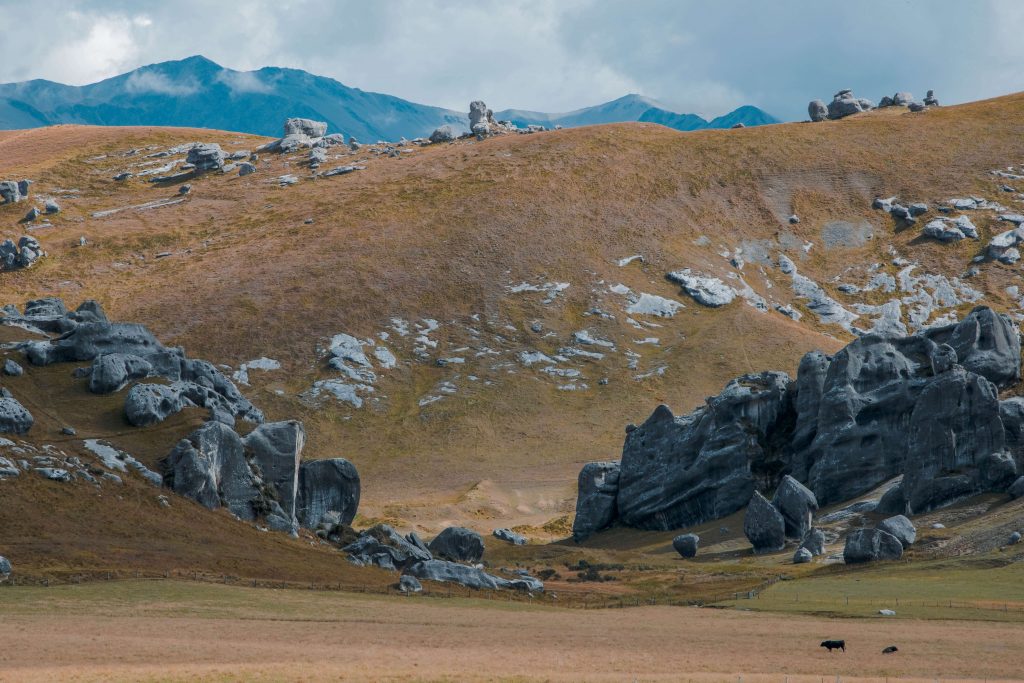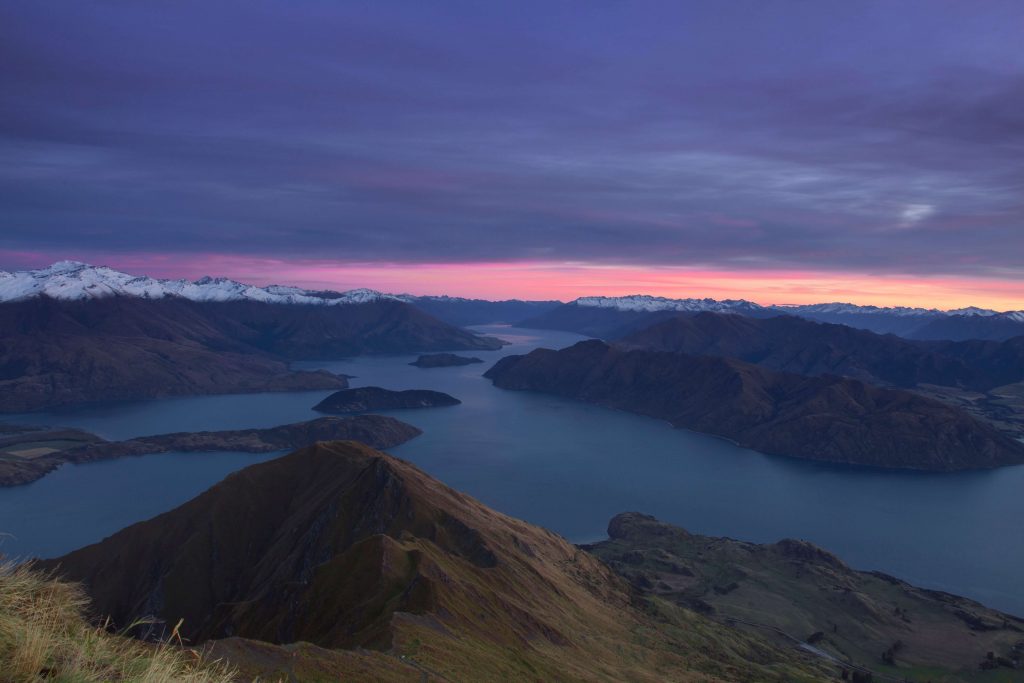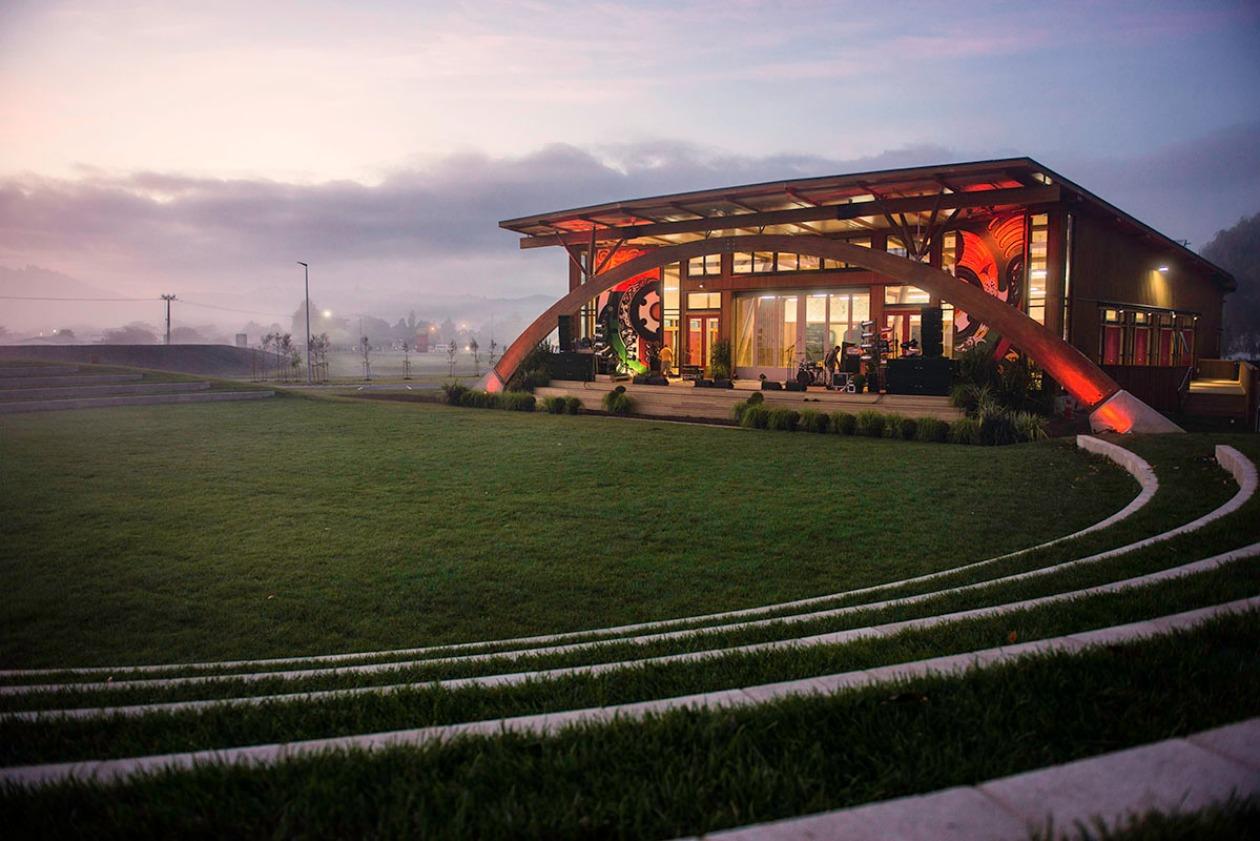The following article is an abridged version of Rod Oram’s essay in The Big Questions: What is New Zealand’s Future? The article was first published by Newsroom.
Rod Oram is hopeful we can solve our paradox of being rich in natural capital, but being a poor performer economically and environmentally. He proposes a way forward.
We wash away each year some 200 million tonnes of top soil, the lifeblood of our economy’s primary sector, thanks to the way we use our land. The eroded soil clogs up our streams, rivers, estuaries and shallow coastal waters, smothering their ecosystems, which are crucial parts of our own life-support system.
We aren’t the worst offenders. Worldwide, we humans move more of the Earth’s surface each year than do natural processes because of the way we farm, quarry, build and reshape our environment in myriad ways.
This is truly The Anthropocene, the geological epoch in which humankind is the greatest driver of planetary change, as geologists concluded in their international congress in 2016. Natural phenomena dramatically shaped all earlier geological times in the planet’s 4.5-billion-year history to date.
How we take responsibility or not for The Anthropocene now and over the next few decades will determine everything about our life on Earth, for good and ill. Since there’s no place on the planet to hide from this, even here on these specks of land in the southern reaches of the Pacific Ocean, our life and economy will change radically too here in Aotearoa-New Zealand. We will be much better off actively shaping our future rather than following passively in the wake of the tsunami of change.
Now we have an economy that fails to pay many a reasonable wage or meet their material needs; that is driven by unsustainable debt, production and consumption; that rapidly degrades our ecosystem on which we depend, as documented by Environment Aotearoa 2015, the Government’s first comprehensive evaluation of our ecosystem. On our current trajectory, all those will get worse. But again, we are not alone. Those are the characteristics of the global economy, albeit we give our own expression to them such as the rapid expansion of dairy farming and international tourism.
In the future, should we choose, we can have an economy that provides a high standard of living in financial and physical terms, in deeply sustainable ways; and we can do so in ways that make sense for who we are as a diverse nation founded on Treaty of Waitangi principles, for the nature of our land and oceans, and for our destiny as a distinctive, tiny country in a teeming world hungry for inspiration and innovation.
Our guide will be the planet itself, hence our need to own up to The Anthropocene. The previous epoch, the Holocene, lasted only 11,700 years — a very short but very sweet spot in climate terms. It enabled the evolution of life as we experience it today in its seemingly infinite variety.
We humans have only been sowing these seeds of destruction since the start of the industrial revolution 250 years ago. That’s only a scintilla of time in the life of the planet. Yet, astonishingly, it is only in the past 50 or 60 years that our human activity has increased so enormously that it has become planet changing. This Great Acceleration, with a base year of 1950, was first named in 2004 in the work of the International Geosphere-Biosphere Programme.
“The second half of the twentieth century is unique in the entire history of human existence on Earth. Many human activities reached take-off points sometime in the twentieth century and have accelerated sharply towards the end of the century. The last 50 years have without doubt seen the most rapid transformation of the human relationship with the natural world in the history of humankind,” wrote Will Steffen and colleagues at the Stockholm Resilience Centre in their 2004 book on their IGBP work.
“In a shrinking world, seemingly unrelated events can be links in the same chain of cause and effect. Nature, politics, and the economy are now interconnected,” Johan Rockström, director of the Stockholm Resilience Centre, writes in his book Big World, Small Planet. “The web of life is fully connected, encompassing all of the planet’s ecosystems, and every link in the chain matters.”
Getting to grips with these vast issues of utter unsustainability is daunting. One of the most helpful frameworks for doing so is the Planetary Boundaries work of Rockström, Steffen and their colleagues at the Stockholm Resilience Centre.
They have calculated the “safe place for humanity” within nine bio-physical parameters. Once human activity passes these thresholds, or tipping points, there is a risk of irreversible and abrupt environmental change.
Our biggest global overshoots so far are loss of biodiversity, excessive phosphorous and nitrogen flows, and climate change. How we use land and grow food are the key drivers of the first two, and to a great extent the third – climate change. Agriculture, forestry and land use account for 21 percent of global greenhouse gas emissions, the second largest source after electricity and other forms of power (37 percent) and ahead of transport (14 percent).

Photograph by Saggittarius Voyage
So many more cows and humans
We exemplify some of these planet-changing dynamics in our own way here in Aotearoa-New Zealand. Since 1985, which was about when we began working on our current framework of environmental legislation, two species in particular have enjoyed spectacular growth: humans have increased by 40 percent to 4.6m; and milked-cows by 120 percent to 5m.
Both species have been highly productive. The human economy has grown six-fold to $240 billion in current dollar terms; and milk volume has trebled to 21b litres. Both urban and rural economies have boomed, putting increasing pressure on the ecosystem. The population of Auckland, for example, has grown by 75 percent to 1.5m since 1985.
Can we continue the way we’re going? For a long while, we’ve seen the tell-tale signs we can’t. Then in 2017, the OECD delivered its own verdict in its once-a-decade report on our environmental performance:
“New Zealand’s growth model…has started to show its environmental limits, with increased GHG emissions, freshwater contamination and threats to biodiversity. Addressing GHG emissions from agriculture, and especially dairy farming, should remain a priority…(and) the need to further explore the economic opportunities that more sustainable uses could yield. Developing a long-term vision for a transition towards a low-carbon, greener economy would help New Zealand defend the “green” reputation it has acquired at an international level.”
Moreover, this exploitation and degradation of our ecosystem to produce commodity products has impoverished us in many other ways. We languish at 25th in the OECD’s rankings of the 35 developed countries in GDP per capita terms, while our unaffordability of homes, our homeless population, our educational disparities, and our youth suicide rates rank among the highest in the OECD.
A paradox of poverty and plenty
This is our paradox of poverty amid plenty. Bar oil producers, we have per capita the highest stock of natural capital in the world; and ours is a world of ever-scarcer resources. Yet we’re struggling economically and environmentally.
As are many other countries, the World Economic Forum noted in its 2018 Global Risk Assessment Report:
“Globally, people are enjoying the highest standards of living in human history. And yet acceleration and interconnectedness in every field of human activity are pushing the absorptive capacities of institutions, communities and individuals to their limits. This is putting future human development at risk,” the report concludes.
Clearly, humankind will fall far, far short of those goals if we merely tweak what we do now. So, here’s a concept for how we can bring about transformative change, and fast. It’s the work of Kate Raworth, a British economist. Starting as a whiteboard doodle of two circles Kate drew in an Oxfam staff meeting in the UK some eight years ago, she has developed it into a powerful, insightful and encouraging body of work in her latest book published in 2017: Doughnut Economics: Seven ways to think like a 21st century economist.
The outer circle is the ecological ceiling – the nine planetary boundaries of the Stockholm Resilience Centre. The inner circle is the social foundation – 12 fundamentals such as education, political voice, energy and food – people have to have if they are to flourish and contribute to changing their communities, and as communities contribute to global progress. Between the ceiling and floor is “the safe and just space for humanity”, enabled by a “regenerative and distributive economy”.
Seven big shifts are needed
Raworth lays out seven big shifts we need to make:
From defining progress as GDP growth, which is an exceptionally narrow economic metric that excludes social and environmental outcomes, to defining it as “meeting the needs of all within the means of the planet.”
From narrowly defining the economy as a self-contained market, to seeing it embedded in, contributing to and dependent on society and the ecosystem.
From fixating on the “rational economic man’ to appreciating and responding to the diversity of human behaviours which include inter-dependence, reciprocity, and adaptability to the people and circumstances around us.
From simple supply-demand equilibrium in markets to the dynamic complexity of economies, societies and ecosystems.
From the flawed hope that growth will reduce inequalities to ensuring all people share in the means of creating wealth and receive their fair share of the rewards.
From believing growth will enable us to clean up the mess we’ve made to redesigning our use of natural resources, our products, service and economies so they contribute to the regeneration of the ecosystem.
From addiction to endless growth to creating economies that thrive and deliver for people and the planet without necessarily growing.
Many of us Kiwis want to progress, as do billions of other people around the world. We want to be wealthier in all senses of the word, economically, socially, culturally and environmentally. But we know we won’t achieve those reasonable goals by working the way we do now.
In everything we do we need to ask ourselves how do we work with nature not against it? If we figure that out, we will give the ecosystem, our life support system, a chance to regenerate, and thus be more resilient and abundant.

Photograph by Martin Vitakova
A guardian of the ocean
Our responsibilities extend far beyond our small islands and their coastal waters to the vast oceans around us. The United Nations, under its Law of the Sea, entrusts us with the fourth largest Exclusive Economic Zone on the planet. These 4,083,744 km2 of ocean, which is some fifteen times our land area, have the highest level of endemic species and relatively the least degraded waters on the planet. In addition to the south in Antarctica, we have long taken a leading role in exploration and science, and governance under the Antarctic Treaty, which came into effect in 1961, and its related agreements.
Meanwhile across Aotearoa, there is growing awareness of the damage we’re doing to the ecosystem, the grave danger of ignoring that, and the abundant opportunities for responding in ways beneficial to it and us. This is increasingly matched by actions, both in campaigns for change and development of ways to work more sustainably.
Examples of the former include Generation Zero’s push for a Zero Carbon Act and the work of 350.org.nz, WWF, Greenpeace and other advocacy groups. Examples of the latter include the work of the Sustainable Business Network on helping small companies devise regenerative business models, and the Sustainable Business Council on getting major corporates to pledge to bigger (but not yet sufficient) commitments to reduce their carbon emissions. In addition, some major corporates are showing strong leadership, such as the commitment to carbon neutral farming by 2025 by Landcorp, our largest corporate farmer and a State Owned Enterprise, Air New Zealand and Z Energy in transport, and Vector and Mercury in electricity.
Much more is happening too at the flax-roots. For example, Ngai Tuhoe have built the first Living Building in Aotearoa. Its Te Kura Whare in Taneatua meets the very demanding international design and performance standards for being self-sufficient for electricity and water. Rightly, this beautiful building looks nothing like Living Buildings elsewhere in the world. It is very much a Tuhoe expression of who they are as a people, and of their home in the life of the ecosystem of Te Urewera. Even more significant was Tuhoe’s insistence in its negotiations with the Government of the granting of legal personhood for the Urewera National Park as the basis of a new structure and relationship for taking care of it. Building on these and other initiatives, Tuhoe are working on 21st century expressions of iwi life in their communities and economic activity within “the living system of nature”.
These are just are few glimpses of the significant changes underway in many aspects of our lives and economic activity across Aotearoa over the next few years and decades.
The task ahead
Here are some of the ways in which key sectors of the economy can use this transition to low emissions to greatly improve their contributions to the environmental, economic and societal well-being of Aotearoa:
Agriculture: Three virtually pollution-free, new food technologies pose the greatest competitive threat to our conventional agriculture worldwide. The first, cellular agriculture in pharmaceutical-grade facilities, grows meat from stems cells and produces versions of milk. The second, contained agriculture, grows conventional plants indoors in LED-lit, airponic-fed systems. The third uses plant materials to produce close approximations of meat. All three technologies are developing fast, thanks to their attraction to high tech venture capitalists in Silicon Valley and elsewhere. The first is only a few years away from limited commercial sale, the other two are already available in small quantities, mainly in the US.
There’s no way to judge yet whether consumers will treat these alternative proteins as niche or mass products. Either way, though, they will put pressure on conventional farming to reduce its adverse environmental impact. Governments too will be pushing for big changes in farming practices because they are large contributors globally to greenhouse gas emissions, land and ecosystem degradation and biodiversity loss.
Similarly, it’s only possible now to indicate broadly how our farmers and food companies should respond. The dairy and red meat sectors will have to massively ramp up their research and development to reduce their animals’ greenhouse gases, which account for almost half the country’s entire emissions; most farmers will have to shift from, say, a dairy monoculture to diversified land use such as adding some crops and forestry, or work with their neighbours to achieve the same end across their farms.
Such deep innovation must be spurred by including agriculture in the Emissions Trading Scheme and new legislated mechanisms we will likely see soon from the Labour-led Government to drive our transition to net zero emissions by 2050. Farmers also need funding for big new areas of research, for example, for measuring, managing and certifying farming practices that increase the carbon sequestered in soil. Then farmers can be rewarded in the ETS for capturing carbon this way, which improves their soil health, plant productivity, farm emissions profiles, and farm economics.
Forestry will play a major role too, thanks to trees sequestering carbon. But the sector has to rise to four big challenges. First, planting many more natives in permanent forests, and many more natives and other species in harvestable forests and drastically fewer radiata pine, which is an inferior timber in terms of its structural and rot-resistance qualities. Second, producing far more engineered and structural building materials from wood to help displace carbon-intensive steel and cement. Third, help develop international systems for measuring and certifying such carbon sequestration, so forest owners can benefit in the ETS. Fourth, making a big push to use biomass for industrial heat and for converting into liquid fuels, thereby displacing fossil fuels.
But the other half of our emissions, those mainly from the urban economy, are almost as difficult to reduce. Here are some of the best strategies:
Urban design: The carbon footprint of our cities is large. Auckland’s, for example, is seven tonnes per person per year and the Council’s goal is to cut it to three tonnes by 2040. But Copenhagen, for example, is already at 2.5 tonnes and plans to be carbon neutral by 2025. So, we need significantly better urban design and transport systems, far higher energy efficiency standards and building codes for all new and existing commercial, industrial and residential buildings.
Above all, to make our towns and cities memorable and attractive in an increasingly homogenized world, we need to create a uniquely Kiwi expression of urbanism, one that reflects the rebuilding of our relationship in town and country with our unique ecosystems and landscapes.
Energy: Move fast to convert our electricity distribution to a Smart Grid, incorporating greater two-way electricity flows, thanks to local renewable generation from photovoltaic panels, small scale wind and hydro, energy trading and battery storage. We would then benefit more quickly from changing technology and economics, particularly for the increasing substitution of electricity for oil and diesel in transport and for coal in some industrial processes, while also increasing the resilience of the grid.
We cannot take for granted our urgently needed transformation. It requires us to achieve an unprecedented speed of change, scale of change and complexity of change we have never come within cooee of before. To do so, we have to be a confident, ambitious, learning and inclusive nation so everyone can contribute to and benefit from becoming deeply sustainable. Above all three attributes are essential to us a nation: common sense of what we need to do, common purpose as to how we will do it, and common wealth from sharing the rewards widely.




Leave a comment